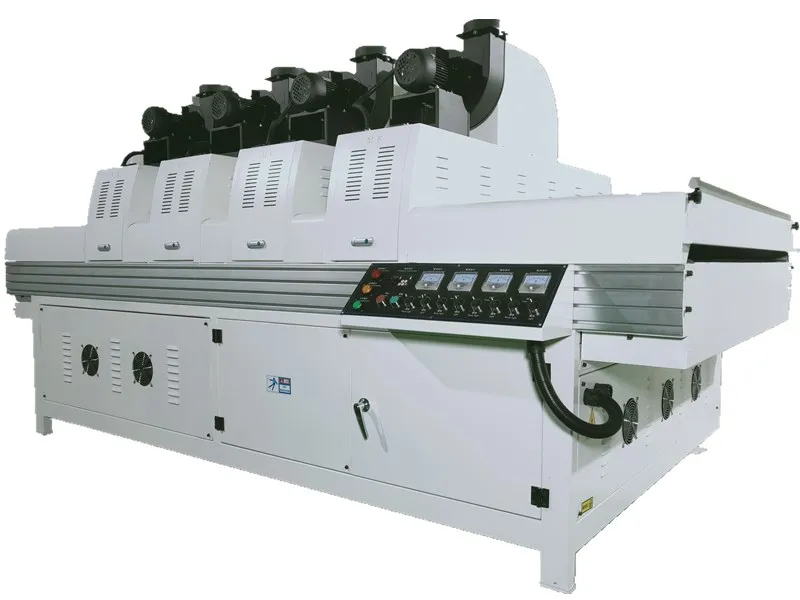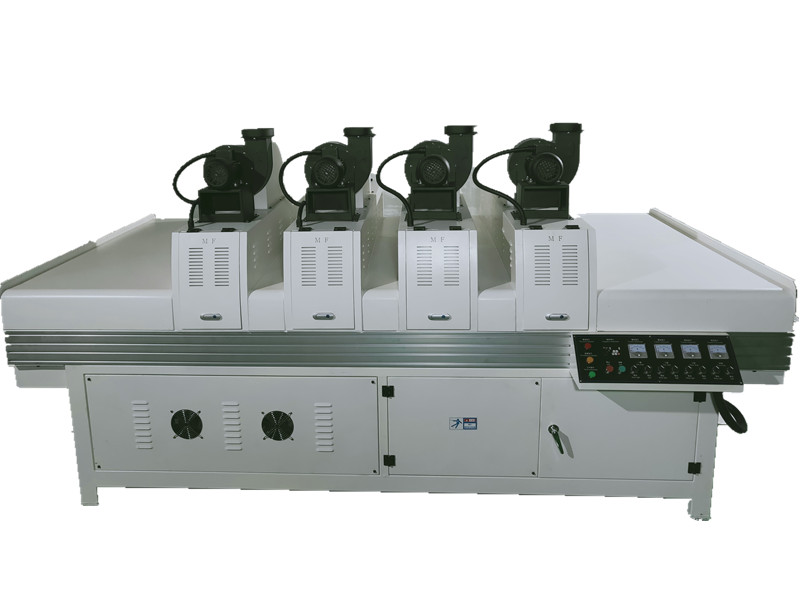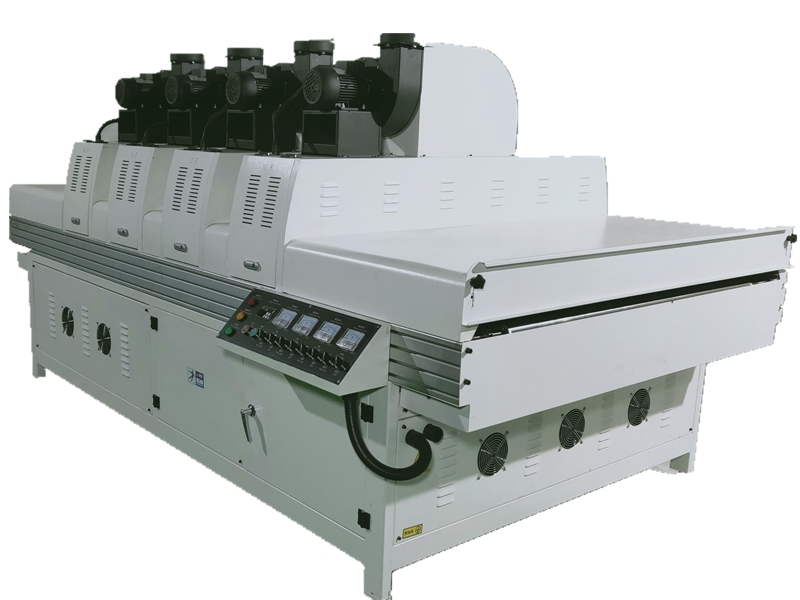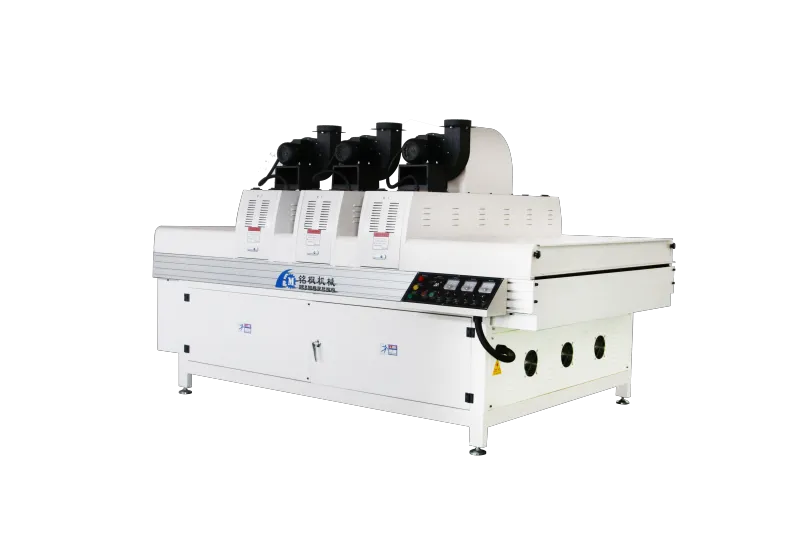- - - Common Industry Products and Market Pricing
The general purchasing price of a “XMF” wood UV dryer machine typically falls in the range of USD 5,000 to USD 10,000. This range covers the most common small- to medium-sized UV curing equipment for wood/boards along with their standard configurations.
In the following, I will first explain why the price usually falls within this range, and then go through the key technical and configuration factors that affect pricing, the typical functions corresponding to different price levels, the hidden costs and operational expenses buyers must pay attention to, how to select the right model to match actual needs, and finally the maintenance and spare parts budget after purchase—offering a professional, detailed, and practical answer.

Wood UV Dryer Machines: What Price Segments Exist in the Market?
Within the industry, wood UV dryer machines range from small handheld or benchtop lamps, to small- and medium-sized conveyor-type UV dryers, and even full-scale UV coating and curing production lines. The price span is therefore very wide.
When referring to the commonly understood concept of a “wood UV dryer machine” for furniture and panels—defined as a complete unit including the lamp source, conveyor system, cooling and exhaust, safety interlocks, and basic controls—the most common small- and medium-sized models in the market are concentrated around USD 5,000–10,000. This is the mainstream price level that manufacturers target for small-batch or workshop-level production.
It should be noted that UV dryer machines priced below USD 5,000 also exist—for example, benchtop or small sensor-based UV curing units, or compact screen-printing/flatbed UV dryers—which can be sold for just a few thousand dollars or even less. On the other end, high-end full lines (large-format UV coating lines with automatic loading/unloading, in-line sanding and inspection, nitrogen-inert curing systems, etc.) can cost well above USD 10,000, reaching tens of thousands to even hundreds of thousands of dollars.
Additionally, LED-UV handheld/benchtop curing equipment and compact spot-curing machines designed specifically for solid wood flooring or high-end wood products often fall in the mid-range price bracket (around USD 5,000–10,000). For example, certain specialized wood floor curing machines have been listed at close to USD 9,999.

What Are the Key Factors Affecting the Price of a Wood UV Dryer Machine?
Below is a list of technical and non-technical factors that determine the overall quotation of a complete machine. Understanding these factors helps map the USD 5,000–10,000 range to specific equipment functions.
1. Light Source Type (LED-UV vs. Mercury/Medium-Pressure Mercury Lamp)
The light source is one of the most critical determinants of price. LED-UV modules generally cost more (due to the light source module and cooling solutions) but offer longer lifespan, lower energy consumption, and no mercury-cooling requirements—thus reducing long-term operating costs. Medium-pressure mercury lamps have lower upfront costs but require water cooling or high airflow cooling, along with more frequent replacements and maintenance. The choice of light source directly impacts both machine pricing and future running expenses.
2. Lamp/Module Power and Quantity
The wattage and number of lamps determine achievable irradiance, line speed, and curing quality. Machines with higher power and multiple lamp heads are more expensive. For higher throughput (faster curing and production), more powerful or additional lamp heads are necessary, which increases the price.
3. Conveyor Width and Load Capacity
The working width of the dryer (e.g., 650mm / 1000mm / 1300mm) and the conveyor belt material (stainless steel mesh, heat-resistant belt, chain plate, etc.) significantly affect manufacturing costs. Wide-format machines and heavy-duty, stable conveying systems are priced higher. Commercial models are typically priced in tiers according to width.
4. Cooling System (Air Cooling / Water Cooling / Hybrid)
Medium-pressure mercury lamps often require water cooling or strong air cooling, along with pumps, cooling towers, and piping—raising both initial costs and maintenance complexity. LED systems usually adopt air cooling or passive cooling, but high-power LEDs still need robust heat sinks and fans, which are not inexpensive. Cooling and exhaust system specifications directly factor into the machine’s quotation.
5. Control and Automation Level
Basic equipment may only have a simple frequency inverter for speed adjustment and manual control panels. Advanced models come with PLCs, touchscreens, real-time irradiance monitoring, intensity recording, automatic safety interlocks, constant-speed variable frequency drives, and remote diagnostics—all of which raise the price.
6. Safety and Environmental Configurations
Features like ozone purification, paint mist filtration, fire interlocks, and UV leakage detectors increase costs but are essential for compliance and operator safety. Different safety packages offered by manufacturers lead to significant price variations.
7. Machine Materials and Manufacturing Quality
The body material (bent steel plates vs. modular profiles), surface treatment (coating or anti-corrosion), welding and assembly precision, and the selection of spare parts all influence both purchase price and long-term durability.
8. Origin, Brand, and After-Sales Service
Brand premium, factory warranty, localized service, and spare parts availability are reflected in pricing. International brands are usually more expensive but offer stronger after-sales support and parts channels, while some domestic or regional manufacturers can provide more competitive pricing at the same configuration level.
9. Shipping, Transport, and Taxes
Wood UV dryer machines are bulky, and international shipping, customs clearance, import duties, and installation/commissioning fees should not be overlooked. These often add 10%–30% (depending on logistics and tax policies) to the final landed cost.

Wood UV Dryer Machine: Configurations at Different Price Levels
Below is a summary of the common price ranges in the market and their typical configurations. This will help you judge what level of wood UV dryer machine your budget can buy.
1. Entry-Level (≈ USD 3,000–6,000)
• Small conveyor-type UV dryer machines or narrow benchtop machines;
• Single or dual mercury lamps / low-power LED modules;
• Basic frequency-controlled conveyor, simple safety protections;
• Suitable for small workshops, sample making, partial curing, or repair work.
2. Mid-Range (USD 5,000–10,000) — The Industry Mainstream
• Medium-power mercury lamps or LED-UV combinations; conveyor width up to about 1000mm or narrower;
• PLC control or touchscreen, basic irradiance monitoring, air cooling or small water-cooling system, simple exhaust purification;
• Suitable for small- to medium-batch curing of wood panels, doors, and cabinet boards. This range is the “balanced first choice” for many workshops.
3. High-End (≈ USD 10,000 and above, up to tens of thousands)
• Multiple lamp heads, high-power LED/mercury lamp combinations, wide conveyor widths (1300mm or more), atmosphere control (nitrogen inert curing), automatic loading/unloading, in-line inspection and recording, complete exhaust purification and safety systems;
• Designed for high-volume production lines, fine finishing, and factories with very high demands on curing quality and production continuity. Some full UV coating lines are priced significantly higher than this segment.
Long-Term Operating Costs Must Be Considered When Purchasing a Wood UV Dryer Machine
Many buyers focus only on the ex-factory price of UV dryer machines while overlooking several long-term costs. Including these items in your budget helps avoid the trap of buying “cheap equipment” that ends up with higher overall expenses.
1. Energy Consumption and Cooling Water Usage
Mercury lamp systems consume large amounts of electricity and require stable water circulation for cooling, along with water treatment (anti-scaling, anti-corrosion).
LED-UV systems have lower initial power demand, but cooling fans and power drivers also consume electricity. Energy use over time should be factored into annual operating costs.
2. Lamp Replacement and Light Decay
Mercury lamps have limited lifespans (hundreds to a few thousand hours) with noticeable light decay, requiring regular replacement. Replacement costs and downtime losses must be considered.
LED lamps last much longer, but drivers and heat dissipation components also have lifespans and maintenance requirements.
3. Filters, Fans, and Maintenance Parts
Exhaust filters, activated carbon, fan bearings, and conveyor belts are consumables that require periodic replacement.
4. Spare Parts Inventory and Maintenance Training
Critical components such as electrical units, lamps, and PLCs may require manufacturer replacement or upgrades. Spare parts pricing and delivery times affect production continuity. Operator training also adds to time and cost.
5. Installation, Commissioning, and Compliance Costs
Overseas purchases often require payment for installation and commissioning services. Environmental or occupational health regulations may necessitate additional exhaust treatment equipment or testing services.

How to Use Your Budget to Buy the “Right” Wood UV Dryer Machine?
To make sure your money is well spent, here is a set of practical steps from defining needs to final purchase:
Step 1: Define Coating Process and Production Capacity Needs
• Target substrate dimensions (maximum board width/length), single board throughput time (or line speed), coating type (LED-curable or not), coating thickness and process (single/multi-layer, need for nitrogen inerting or not).
Step 2: Decide on the Light Source Type
• If the paint manufacturer specifies “LED-compatible” and the substrate is heat-sensitive, LED-UV is the preferred option.
• If the coating is based on a traditional system or requires thick-film curing with stronger penetration, mercury lamps remain a common solution.
Step 3: Set a Mandatory Configuration Checklist (Controls, Cooling, Safety)
• List essential safety items (interlocks, UV leakage detection) and control items (PLC, irradiance meter, recording functions), and make sure they are written into the purchase contract.
Step 4: Request Technical Parameters and Compare Energy Efficiency
• Ask suppliers for parameters such as “working irradiance (mW/cm²),” “recommended dose (J/cm²),” “conveyor line speed range,” and “lamp lifespan,” along with proof of actual testing (or third-party test reports).
Step 5: Compare Prices Alongside After-Sales Support
• Request quotations from multiple suppliers and compare warranty terms, lamp replacement policies, spare parts lead times, and whether installation, commissioning, and operator training are included.
Step 6: Calculate the Total Cost of Ownership (Equipment Price + Annual Operating Cost + Annual Maintenance Cost)
• Estimate energy use and maintenance over 3–5 years. Consider lamp replacement frequency and downtime costs when calculating the long-term impact.
Wood UV Dryer Machine: How Do I Use My Budget to Get the Right Equipment?
Answer: For the vast majority of small- to medium-sized workshops that need UV curing for wood panels, furniture boards, or cabinet doors, a reasonable purchasing budget is generally in the range of USD 5,000 to USD 10,000. Within this range, buyers can obtain mid-range models equipped with practical irradiance levels, reliable control systems, basic cooling, and compliant safety features. This price conclusion aligns with public quotations from multiple suppliers in the market.
What Makes Your Cost Structure Competitive Compared to Other Suppliers?
XMF Machinery operates its own factory in Foshan and sells directly to customers, cutting out distributors or agents and lowering overhead. As the manufacturer, this allows us to offer cheap, low price, and discounted equipment without sacrificing quality. Our transparent pricing, flexible quotes, and volume wholesale deals make us cost-efficient.
